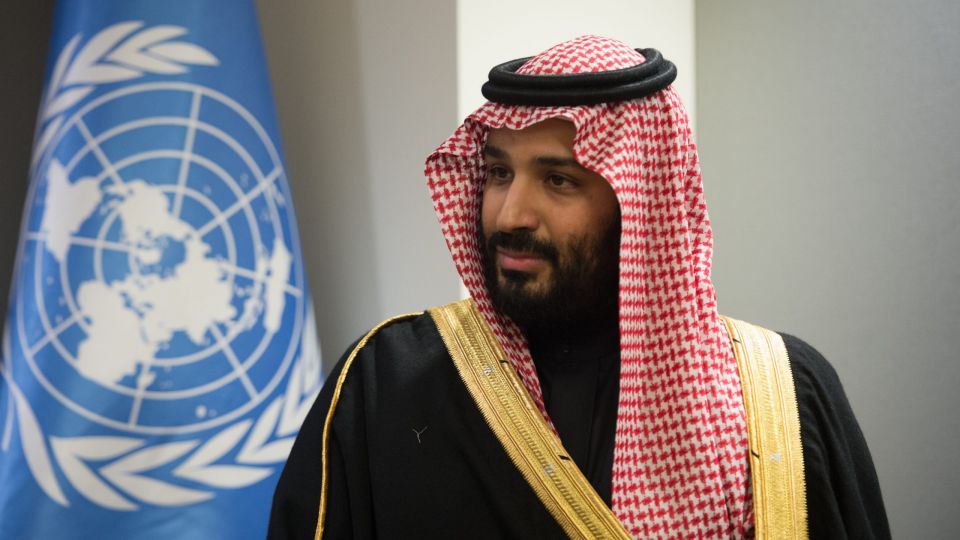December 3, 2018
Oil will play a key role in any relationship between the United States and its erstwhile Middle Eastern ally.
FOR the first time in over a year West Texas Intermediate (WTI) — the US crude benchmark — went below the $50 a barrel mark last week before recovering somewhat. The Organisation of the Petroleum Exporting Countries (Opec) cannot sustain it. With oil prices down, major oil producers are faced with a daunting, if not the impossible, task of balancing their budgets.
Opec kingpin, Saudi Arabia is faced with a grim scenario. For domestic political reasons and with the murder of Jamal Khashoggi haunting the defacto king, Mohammad bin Salman (MBS), Riyadh needs oil revenues and in abundance.
The current price is not generating enough revenue to help MBS overcome his political problems.
Saudi Arabia wants to tighten the markets and put a floor under the oil markets. As per the Opec secretariat, a cut of 1.3 million barrels per day (bpd) is required to balance the markets.
Russia also seems to be agreeing to the notion. Moscow initially was reluctant. But last Wednesday, as President Vladimir Putin underlined that the current oil prices of around $60 a barrel were “absolutely fine” for his country, he also indicated, Moscow was ready, if needed, to work with Opec on stabilising the market.
But there is another very significant hurdle. If Saudi Arabia takes the initiative and manages an output cut agreement, it could earn the ire of US President Donald Trump.
President Trump has been urging the Opec, for some time now, to keep pumping at higher rates, so that prices stay low. In a tweet, early last week, President Trump said: “So great that oil prices are falling (thank you, President T). Earlier, when oil prices broke the $55 mark and went below,
President Trump tweeted: “Oil prices getting lower. Great! Like a big Tax Cut for America and the World. Enjoy! $54, was just $82. Thank you to Saudi Arabia, but let’s go lower!
Trump thus continues to urge producers to bring the prices still lower.
This is a catch-22 situation for Riyadh and especially its crown prince. After the Khashoggi murder saga, MBS is under intense international scrutiny and is relying upon political support from Trump to survive. Until this point, President Trump continues to stand by the beleaguered
MBS. Despite the CIA accusation that MBS was responsible for the murder of Khashoggi, President Trump continues exonerating MBS, highlighting Riyadh’s importance in stabilsing the oil markets. The Saudis “have worked closely with us and have been very responsive to my requests to keeping oil prices at reasonable levels — so important for the world,” he said in a statement.
Trump’s support is the key to the political fortunes of MBS and he cannot put that at stake by infuriating him at this moment. But there is a caveat to this entire equation.
In case, oil prices continue to go down, it would impact the US shale output. Trump is careful on this count too, for the oil industry has been his key supporter. By pressuring the Saudis to forego an output cut, Trump also stands to put financial strain on the energy companies that have pushed US output to all-time highs — a feat he frequently touts.
Now, this is an interesting balancing act. “I think it’s a very interesting dynamic that must be unfolding right now in the White House, between, on the one hand, wanting to help the US consumer by having low oil prices, but you have a very important US industry, the US shale industry, that will be really hurt if prices continue to fall further,” Helima Croft, global head of commodity strategy at RBC Capital Markets told CNBC.
Analysts believe most frackers can now break even on new wells with crude prices below $50 a barrel. But with US WTI crude falling towards $50, the comfort zone is shrinking.
American drillers largely support the Opec decision in January 2017 to cut output to drain a glut of crude and prop up prices. Continental Resources CEO Harold Hamm, an energy adviser to Trump, believes, Opec “did the right thing” and “acted very responsibly” by extending the production curbs into 2018 at its final meeting last year.
So a convergence of interest is emerging. Saudi Arabia wants higher prices. Trump wants lower prices to the extent that it does not suffocate the US energy sector. This is providing a win-win situation for both. Saudi Arabia may go for an output cut and President Trump would accept it, for the sake of the US energy sector.
The deal could be finalised in Buenos Aires, though the official seal of acceptance would only be affixed on it in Vienna on December 6.


